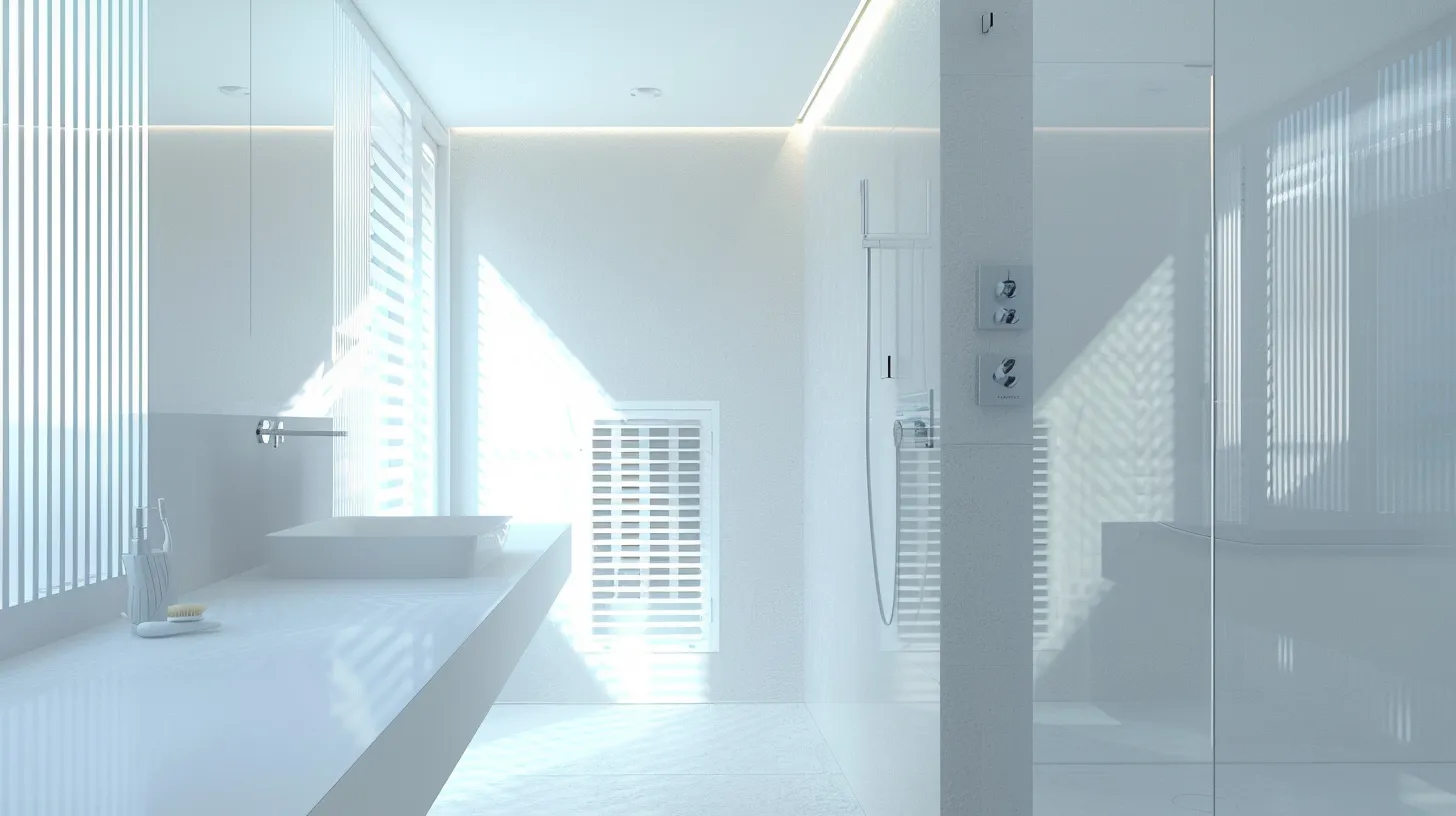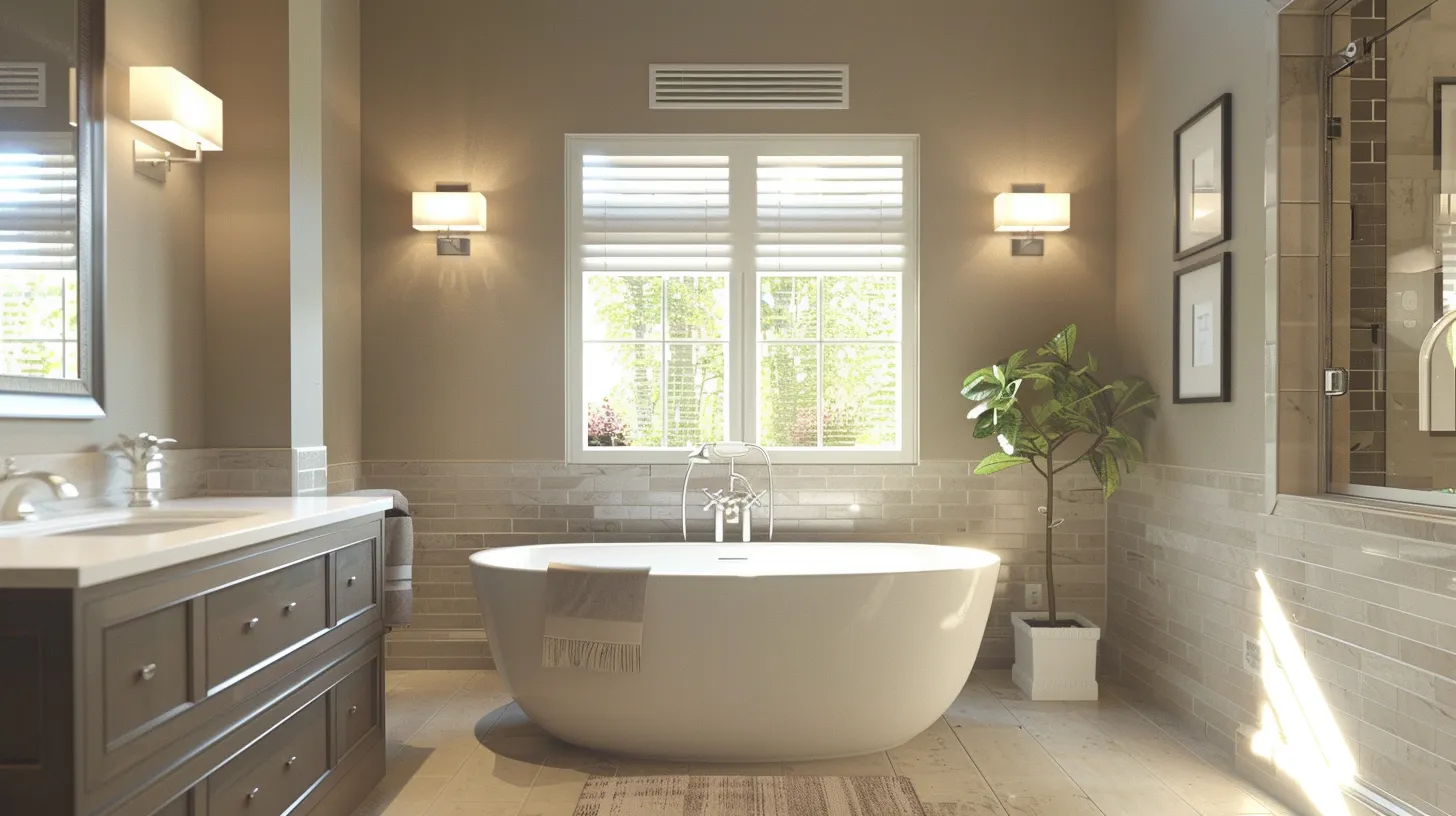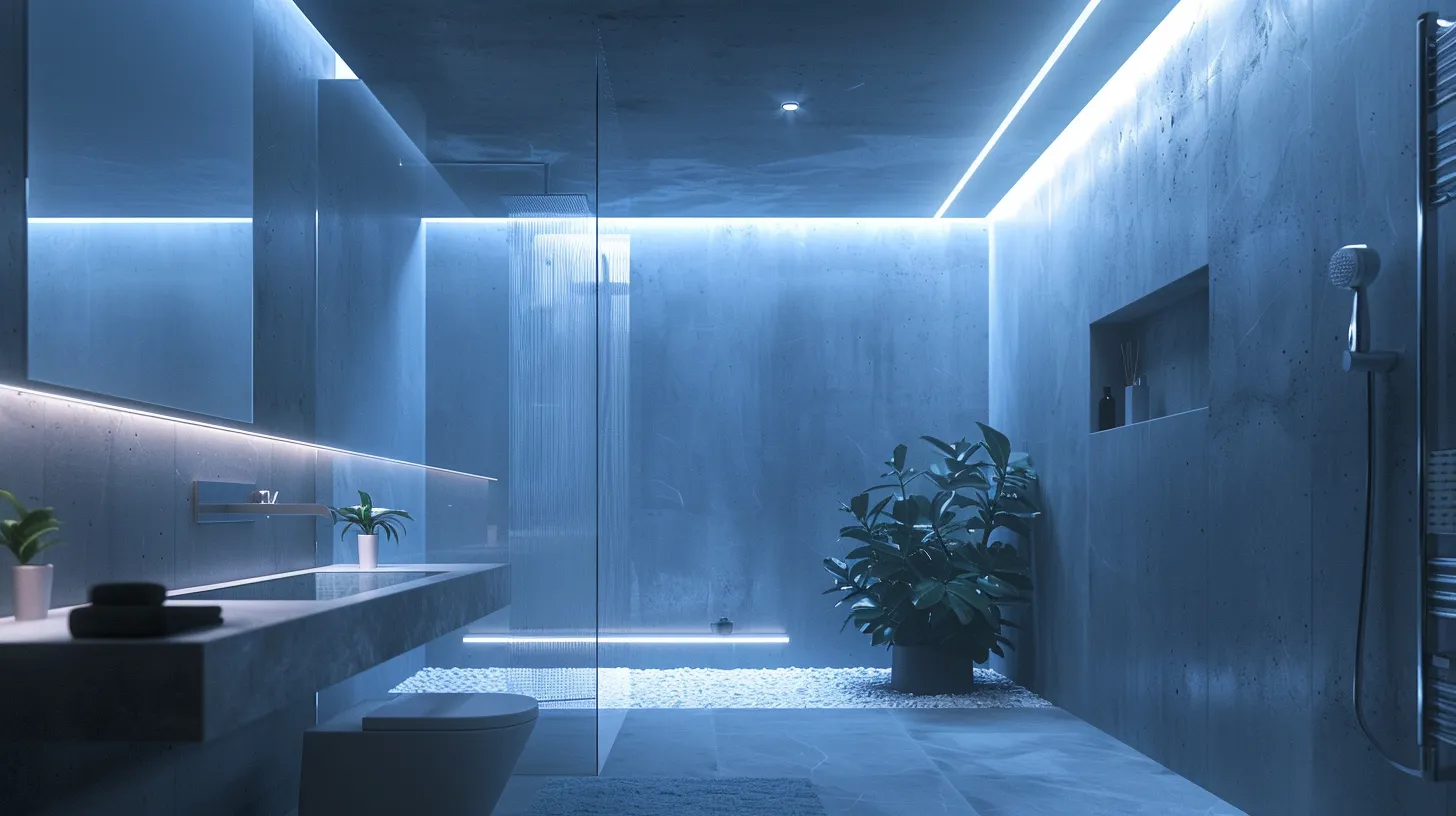Bathroom AC Vent Types You Didn’t Know About
When it comes to bathroom ventilation, many homeowners overlook the variety of AC vent types available. Understanding these options can significantly improve air quality and comfort levels in your bathroom. This article will explore the common types of bathroom AC vents, including their functions, and highlight unique options you might not know about. Readers will benefit from practical tips on selecting the right vent type for their space and what to consider when working with an HVAC contractor or electrician. By addressing common ventilation issues, this guide aims to help you make informed decisions for a healthier, more effective bathroom environment.
Understanding the Importance of Proper Bathroom AC Vent Types

Choosing the right type of AC vent for a bathroom is essential for managing humidity levels effectively. Proper ventilation through vents in the door or pipe ensures that excess moisture is expelled, which can significantly reduce the likelihood of mold and mildew growth. When bathrooms lack adequate airflow, humidity can become trapped, leading to various structural issues and health concerns.
Different vent types, such as those installed in the roof, play a critical role in maintaining optimal humidity levels. Roof vents allow hot, moist air to escape, which aids in balancing indoor climate conditions. Implementing a humidifier in conjunction with proper venting can further enhance air quality, making the bathroom a more comfortable space.
Understanding the function of specific vent types helps ensure a healthier environment. Properly placed vents can mitigate humidity-related issues and improve airflow, promoting the longevity of bathroom fixtures. As efficiency becomes increasingly important, selecting the right bathroom ac vent type should be a priority for homeowners and builders alike.
Common Bathroom AC Vent Types and Their Functions

Wall-mounted AC vents are effective for enhancing airflow, while ceiling-mounted options provide effective distribution of conditioned air from the condenser. Floor vents are designed to draw in air, ensuring optimal intake and humidity control. Each type plays a crucial role in maintaining a comfortable bathroom environment by managing moisture effectively. The following sections will explore their specific functions and benefits.
Overview of Wall-Mounted AC Vents
Wall-mounted AC vents are designed to improve airflow in bathrooms, playing a vital role in managing humidity levels effectively. These vents allow for the expulsion of warm, moist air, particularly when installed near the ceiling where heat accumulates, thus preventing excess moisture from settling in the room. Properly positioned wall vents can enhance air quality, making it easier to control humidity compared to relying solely on a boiler or flue ventilation system located in the attic or elsewhere in the home.
Features of Ceiling-Mounted AC Vents
Ceiling-mounted AC vents serve as efficient ventilators that combat moisture in bathrooms, significantly reducing the risk of mold growth. These vents draw warm, humid air upwards and expel it outside, ensuring that any moisture generated during showers or baths escapes promptly. In construction, the strategic placement of ceiling vents maximizes airflow, ultimately enhancing indoor air quality and creating a healthier bathroom environment.
Characteristics of Floor Vents for Bathrooms
Floor vents for bathrooms are essential components designed to draw in air efficiently while managing humidity. These vents, often constructed from durable materials like steel, facilitate optimal airflow necessary to disperse moisture created during showers and other activities. Strategically placing bathroom AC vents near the floor ensures that warmer, humid air is effectively vented out, reducing the risks associated with excessive moisture, such as mold growth or damage to fixtures.
- Efficiently draws in air to maintain humidity control.
- Constructed from durable materials like steel for longevity.
- Strategically placed to combat moisture produced during showers.
- Reduces risks associated with mold and fixture damage.
Unique or Less Common Bathroom AC Vent Types

Inline ventilation fans are a lesser-known option that effectively reduces humidity levels by pushing air through ducts, while remote AC vents offer flexibility in placement, ensuring optimal airflow. Register booster fans enhance existing systems by increasing airflow, contributing to better overall ventilation. Each of these choices plays a vital role in maintaining a comfortable and healthy bathroom environment, catering to various design and functionality needs.
What Are Inline Ventilation Fans?
Inline ventilation fans are specialized devices used in bathroom air conditioning systems to effectively manage humidity levels. These fans operate by creating negative pressure, which helps to expel moist air through ducts connected to the exhaust system. Regular inspection of these systems is essential to ensure they remain efficient, as proper maintenance directly contributes to a more comfortable bathroom environment, reducing the likelihood of mold and improving overall air quality, similar to the functionality found in well-ventilated bedrooms.
An Overview of Remote AC Vents
Remote AC vents are an innovative option that enhances indoor air quality by allowing homeowners to strategically place vents where they are most effective. Made from durable materials such as plastic or metal, these vents can adapt to any furnace or ventilation system, providing flexibility in design and functionality. By efficiently managing the distribution of conditioned air, remote AC vents help prevent moisture accumulation and combustion-related issues, contributing to a healthier bathroom environment.
Benefits of Register Booster Fans in Bathrooms
Register booster fans provide an effective solution for enhancing air circulation in bathrooms, particularly in scenarios where a heat pump or chimney venting system may be insufficient. These fans increase the airflow in existing ventilation systems, addressing potential humidity buildup and promoting better indoor air quality. For individuals invested in building science, the integration of register booster fans can be a smart choice, improving comfort, reducing moisture-related issues, and fostering a more pleasant environment in the bathroom.
- Enhances air circulation in the bathroom.
- Increases airflow in existing ventilation systems.
- Addresses humidity buildup effectively.
- Promotes better indoor air quality.
- Improves comfort and reduces moisture-related issues.
Factors to Consider When Choosing Bathroom AC Vent Types

Evaluating the size and layout of a bathroom is crucial when selecting AC vent types, as different spaces require specific solutions. Energy efficiency should also be considered, particularly in terms of noise levels and how they impact comfort. Additionally, understanding the materials used, such as corrosion-resistant screws in diffusers, can enhance long-term performance. These factors contribute significantly to effective ventilation, promoting a healthier environment.
Evaluating Size and Layout of Your Bathroom
When evaluating the size and layout of a bathroom, understanding how the space influences ventilation placement is essential. A well-planned bathroom layout allows for strategic positioning of vents, ensuring that airflow effectively reaches all corners. Including wire connections for remote AC vents, if applicable, should also be part of the assessment to accommodate electrical needs while maintaining aesthetic appeal.
- Assess the size of the bathroom to determine the appropriate vent type.
- Consider the layout to position vents for optimal airflow.
- Include wire connections if remote AC vents are chosen for flexibility.
Assessing Energy Efficiency With Different Vent Types
When assessing energy efficiency with different bathroom AC vent types, it is important to consider how well each option can manage airflow while minimizing energy consumption. For instance, using inline ventilation fans can enhance energy efficiency by facilitating effective air exchange without placing unnecessary strain on HVAC systems. Choosing vents such as remote AC vents may also prove beneficial, as their adaptability can lead to improved air distribution while optimizing energy use through tailored designs.
- Assess energy efficiency of each vent type.
- Consider airflow management and energy consumption.
- Evaluate benefits of inline ventilation fans.
- Explore remote AC vents for adaptability.
Understanding Noise Levels Associated With Various Vents
Selecting bathroom AC vents involves considering the noise levels associated with different options. High-velocity fans, for example, may produce noticeable noise that can disrupt the tranquility of the bathroom environment. Homeowners should prioritize quieter models or inline ventilation fans that minimize sound, ensuring comfort while effectively managing humidity and airflow.
Installation Tips for Different Bathroom AC Vent Types

The following sections provide essential insights for effectively installing bathroom AC vents. A step-by-step guide will outline the process for wall-mounted vent installation, ensuring proper airflow and moisture control. Best practices for ceiling and floor vent installation will highlight key considerations for placement. Additionally, maintenance tips will offer strategies to enhance the performance and longevity of AC vents, ensuring a comfortable bathroom environment.
Step-by-Step Guide for Installing Wall-Mounted Vents
Installing wall-mounted vents requires careful planning to ensure effective air circulation and humidity control in the bathroom. First, one should identify the optimal location for the vent, typically toward the upper part of the wall to capture warm air. Once the location is decided, proper tools, including a power drill and screwdriver, should be gathered to facilitate a smooth installation process, ensuring that the vent is securely mounted for long-term performance.
Best Practices for Ceiling and Floor Vent Installation
When installing ceiling and floor vents in bathrooms, it is vital to position them strategically to maximize airflow and humidity control. Ceiling vents should ideally be placed in areas where warm, moist air tends to accumulate, such as above the shower or bathtub, promoting efficient ventilation. For floor vents, ensuring they are installed near the shower or sink can help to capture excess moisture quickly, reducing the risk of mold growth and enhancing overall air quality in the space.
Maintenance Tips for Long-Lasting AC Vent Performance
To ensure long-lasting performance of bathroom AC vents, regular maintenance is essential. Homeowners should clean the vents frequently to remove dust and debris that can obstruct airflow and decrease efficiency. It is also advisable to check and replace filters periodically, as clogged filters can lead to higher humidity levels and potential mold growth, impacting both air quality and comfort in the space.
Frequently Asked Questions About Bathroom AC Vent Types

Determining the best AC vent type for humidity control is vital for maintaining a healthy bathroom environment. This section will address how different vent types can impact indoor air quality and highlight key signs of an ineffective bathroom AC vent. These insights will help homeowners make informed decisions regarding their ventilation systems, ensuring comfort and efficiency.
What Is the Best AC Vent Type for Humidity Control?
When selecting the best AC vent type for humidity control in bathrooms, wall-mounted and ceiling-mounted options often take precedence due to their effectiveness in facilitating airflow. Wall-mounted vents, strategically positioned near the ceiling, can expel warm, moist air efficiently, while ceiling-mounted vents allow humid air to rise and escape promptly. By utilizing these vent types, homeowners can maintain optimal humidity levels, minimizing the risk of mold and enhancing overall air quality in their bathrooms:
- Wall-mounted vents expel warm, moist air effectively.
- Ceiling-mounted vents promote prompt escape of humid air.
- Utilizing these vent types aids in optimal humidity control.
How Can Vent Types Affect Indoor Air Quality?
The type of bathroom AC vent installed significantly influences indoor air quality by affecting the circulation and removal of moisture-laden air. For instance, wall-mounted and ceiling-mounted vents are particularly effective at expelling warm, humid air, which is essential for minimizing the growth of mold and mildew. By ensuring that air flows effectively and unwanted moisture is removed, homeowners can create a healthier living environment in their bathrooms:
| Vent Type | Impact on Indoor Air Quality |
|---|---|
| Wall-Mounted Vents | Expel warm air, reducing humidity levels effectively. |
| Ceiling-Mounted Vents | Facilitate prompt removal of humid air, lowering mold risk. |
| Floor Vents | Assist in air intake, helping to circulate cooler air. |
| Inline Ventilation Fans | Enhance air exchange, swiftly expelling excess moisture. |
What Are the Signs of an Ineffective Bathroom AC Vent?
Signs of an ineffective bathroom AC vent can manifest in various ways, typically marked by persistent moisture and humidity issues. Homeowners may notice an increase in mold and mildew growth, as well as a musty odor that indicates poor ventilation. Additionally, if mirrors fog up excessively after showers or if condensation appears on walls, these conditions suggest that the AC vent is not adequately expelling humid air, highlighting the need for an evaluation of the ventilation system to enhance airflow and air quality.
Conclusion
Understanding the various types of bathroom AC vents is crucial for effective humidity management and maintaining indoor air quality. Options like wall-mounted, ceiling-mounted, and inline ventilation fans play significant roles in controlling moisture levels, ultimately preventing mold growth and improving comfort. Evaluating factors such as size, energy efficiency, and noise levels assists homeowners in selecting the most suitable vent types for their needs. Prioritizing proper ventilation not only enhances the bathroom environment but also promotes the longevity of its fixtures and overall health.





